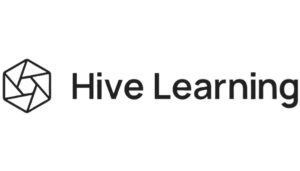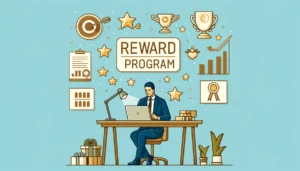HRD Roundtable Report: Leading Change through Data-Driven Decision Making
- 6 Min Read
People analytics has been touted as the future of driving business success. HR teams have a huge opportunity to influence the direction of their organisations. 40% of c-suite leaders say they currently use HR data to make business decisions (Sage 2022) – How can HR team ensure they are supplying the data they need? […]
- Event Types
- Date of Event: Sep 22, 2022


People analytics has been touted as the future of driving business success. HR teams have a huge opportunity to influence the direction of their organisations. 40% of c-suite leaders say they currently use HR data to make business decisions (Sage 2022) – How can HR team ensure they are supplying the data they need? How do we show the value and close the gap with the other 60% of our leaders that aren’t there yet?
What steps do we need to take to enable our teams to understand and confidently deliver people insights, and strengthen the relationship with the c-suite?
Led by Subhaan Nizarali, People Analytics Expert and supported by further insights from Chris White, Account Executive, Sage People, this discussion with senior HR leaders was conducted under Chatham House Rules. This report will contain the key discussion areas and all participants will be anonymised.
A note from Subhaan Nizarali, the moderator:
My key takeaways from the session were:
- Colleague listening: ensure that data driven decisions and strategy are complemented by what the workforce feel, want and need. This data is a really good starting point for data-driven decision making if it does not already exist.
- Culture: learn and understand your organisation’s complexities and behaviours before driving prescriptive or predictive analytics. Forecasting change in a toxic culture only compounds a problem!
Challenges in starting to use data
Most organisations are using data within their HR teams in one form or another, but there are some common challenges in taking the use to the next level.
Scalability can be difficult. It often seems that the more insights you develop the more questions you have. Organisations need to find the balance between looking for data to support a conclusion and looking at data to find new challenges. Data sources can also be disjointed, with different inputs and so comparisons can never be apples for apples. Sometimes this can be worked on, other times its more difficult – for example, many countries have strict rules on what ethnicity data can be asked of employees.
Data maturity can also vary massively due to industry. In hospitality for example, a lot of data is collected from guests and customers, but employee turnover is often high, and without the infrastructure to continuously collect information. When you have a turnover rate of ~90 days, how do you build a clear picture?
HR teams can sometimes go with their gut feeling, rather than truly using the data. They may not be as data literate as functions that have been using it during their day to day for a long time, like finance teams for example. This is a skill that needs to be developed, in order to be able to take concrete decisions to the leadership team. One participant shared how they have teamed up with their product and marketing functions for coaching on how to use systems like Tableau more effectively. They are business is in data, so why not make use of that resource!
Data in action
One use case that businesses can start using people data for is in reward and recognition processes. One participant shared their experience with using data in their pay review process, supplying managers with performance data to help inform pay decisions. The goal here is to move away from a yearly review process based on numbers crunched within the HR function, which can feel removed from the employee’s day to day as well. Instead, employees and managers set and feedback on their own goals, which are then translated into ratings. These ratings are then fed back for final decisions by managers, empowering them with more autonomy over their teams, and budgets.
However, this leads onto the question of transparency. In this scenario, employee performance and reward are directly related through the metric of this rating. How much do we share with the employee about how the ratings are calculated? Should people know that this review is linked to reward? Does too much transparency run the risk of people marking themselves overly favourably to bump scores? This participant shared how they have set boundaries around transparency – the other metrics (e.g., how long since the last pay increase? Where does their current reward rank in the organisation?) are public. Sharing the rating itself is down to manager discretion, and the actual analysis steps are not shared so it is not possible to work out exactly how they correlate.
We can also use data through the lens of total rewards – what do people want from their packages? We heard from a few participants on their use of data to assess which benefits and rewards were being accessed most frequently by their staff. This information is then used to make choices on where to invest more in the future. What alternate ways of support can they offer?
Informing strategic decisions
The appetite for data varies across the business – one of the roles of HR moving forward is to show how valuable it can be. Some elements are already front of mind (pay and gender gap reporting for example) but things like organisational health or recruitment statistics can be less appealing to work with.
Engaging with the wider employee base to collect the information can also be a challenge. Surveys are often the go-to format, but survey fatigue can skew results. Leaders can tackle this by getting out and engaging with people on a face-to-face level about the importance of getting involved. Organisations also must show follow through – what are they going to do with the data?
Many organisations realistically are at a stage of data maturity where they are looking at data to help solve problems, rather than monitoring data to find problems. For example – noticing an issue with retention, then digging into engagement data to find out why. This is not using data to change but being changed by data. One use case heading in the direction of more proactive data use was from a leader in the hospitality space. After several months of closed locations, they created a batch of learning materials to get their teams back up to form. They then looked at the analytics of where and when people were using the learning content, and any performance trends. This enabled them to go to their board with concrete examples of where the content was making a difference, and ultimately as for more budget and resource to continue.
Engaging with data proactively is a skillset that many HR and people functions still need to develop. Whether that is upskilling their team, or bringing in a specific people analytics person, these are capabilities that will be integral to understanding the workforce, leadership, and business requirements of the future.
Tools mentioned
- Sage People
- PowerBI
- Tableau
- Humu
- Glint
- Gartner
- Peakon
- AIHR Resource library as a source for Analytics & KPIS








